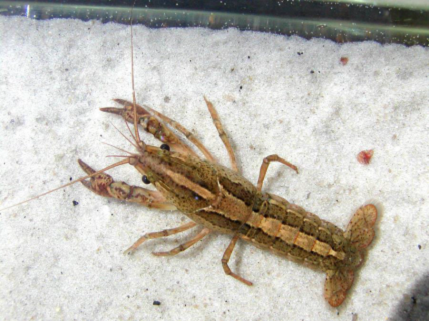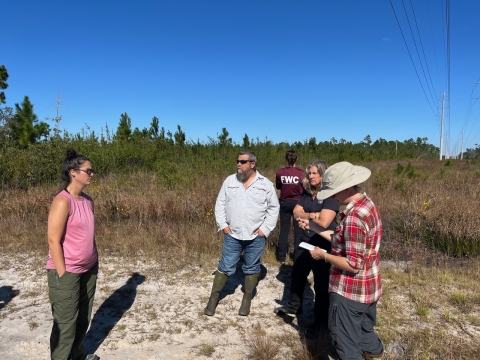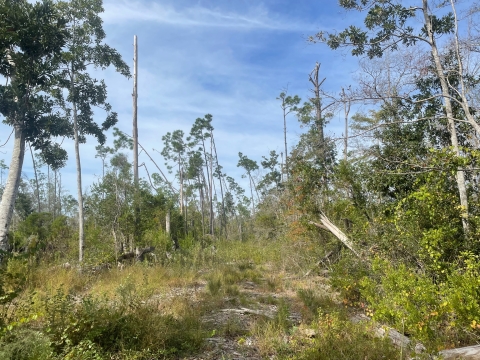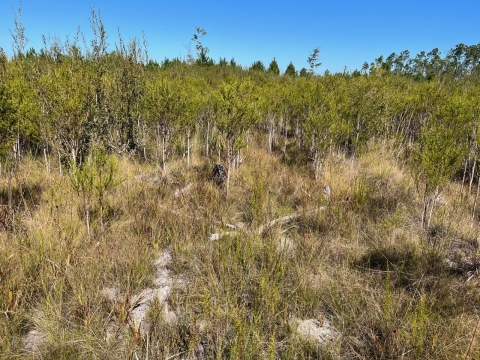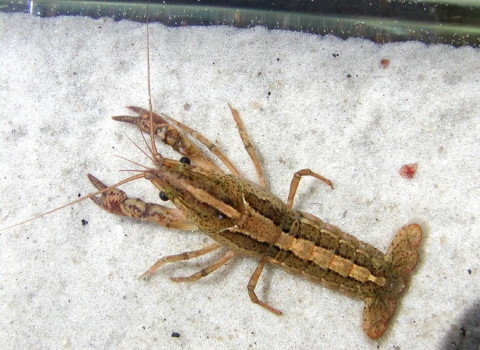Panama City Crayfish: a unique Florida local
The endangered Panama City crayfish (Procambarus econfinae) is a species of freshwater crayfish native to the Econfina Creek watershed in northern Florida. The primary threats to the Panama City crayfish include habitat degradation and loss due to urbanization, agriculture, and changes in water quality. Conservation efforts focus on preserving and restoring the species' natural habitat, implementing water quality management practices, and raising awareness about the importance of protecting this unique crayfish species to ensure its survival.
The U.S. Fish and Wildlife Service Panama City Field Office and Florida Fish and Wildlife Conservation Commission (FWC) play a primary role in leading land acquisition and habitat conservation efforts for the Panama City crayfish.
Key Aspects of Recovery Priorities:
- Establish protected areas and conservation easements to safeguard natural habitats of the Panama City crayfish.
- Implement habitat restoration projects to improve wet pine flatwoods environment where these crayfish reside.
- Conduct ongoing research and population monitoring to better understand the ecology, behavior, and specific requirements of the Panama City crayfish.
- Collaborate with local governments and community partners to develop and enforce land use plans that consider the conservation needs of the crayfish.
- Seek partnerships with private landowners to encourage sustainable land management practices that benefit the crayfish and its habitat.
By addressing these aspects collectively, recovery efforts aim to not only protect the Panama City crayfish directly but also to sustain the overall health of its habitat and the surrounding ecosystem. This comprehensive approach is crucial for the long-term survival and recovery of this endangered crayfish species in Florida.
Funding to Support Multiple Initiatives in Bay County
Partners for Fish and Wildlife Biologist Katie Ayers (Panama City Fish and Wildlife Conservation Office) met with Florida Ecological Services Biologists Samantha Hermann and Patricia Kelly, FWC Biologist Michael Sisson, and private environmental consultants to conduct a site visit and develop a restoration plan at the College Station conservation easement conservation easement
A conservation easement is a voluntary legal agreement between a landowner and a government agency or qualified conservation organization that restricts the type and amount of development that may take place on a property in the future. Conservation easements aim to protect habitat for birds, fish and other wildlife by limiting residential, industrial or commercial development. Contracts may prohibit alteration of the natural topography, conversion of native grassland to cropland, drainage of wetland and establishment of game farms. Easement land remains in private ownership.
Learn more about conservation easement for Panama City crayfish in Bay County, Florida. Several hundred acres of the property suffered timber damage from Hurricane Michael, a category 5 storm, in 2018 and have been left unmanaged, leading to closed canopy wetland conditions and high timber fuel loads.
The recent Bipartisan Infrastructure Law Bipartisan Infrastructure Law
The Bipartisan Infrastructure Law (BIL) is a once-in-a-generation investment in the nation’s infrastructure and economic competitiveness. We were directly appropriated $455 million over five years in BIL funds for programs related to the President’s America the Beautiful initiative.
Learn more about Bipartisan Infrastructure Law allocated funding to support the National Cohesive Wildland Fire Management Strategy to assist communities at risk from catastrophic wildland fires. Funds were awarded to the Partnership for Gulf Coast Land Conservation, a local 501(c) nonprofit, and U.S. Fish and Wildlife Service Partners for Fish and Wildlife Program to reduce hazardous fuel loads in Bay, Gulf, Calhoun, and Liberty counties in Florida to protect community infrastructure and promote resilient ecosystems.
The USFWS Partners Program plans to support the Ecological Services Program and FWC in mechanically clearing vegetation and reintroducing controlled burns at the College Station easement to reduce wildfire risk to nearby neighborhoods and restore habitat for the Panama City crayfish.


